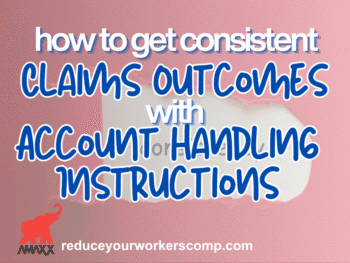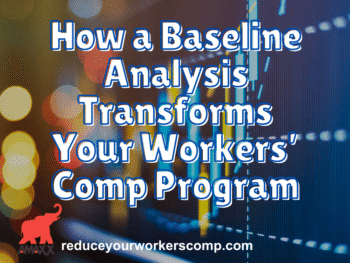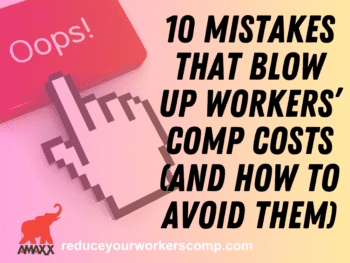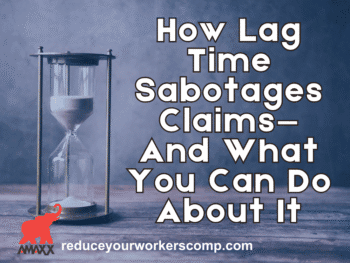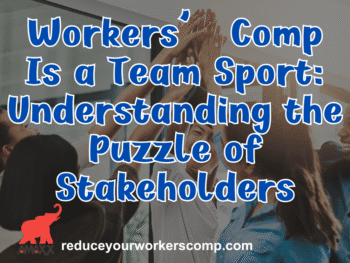
In order for a work injury to be compensable, it must first “arise out of” and take place “in the course of” the employee’s employment. While case law interpretations vary in each jurisdiction, understanding these principles is key to evaluating a claim.
When Does an Injury “Arise Out Of” Employment?
The first element of compensability is probably an area of workers’ compensation law that has led to the greatest split in interpretations across the United States and the 51 various workers’ compensation programs. This is based on the fact this component examines the causation and its relation to the “risk” related to the employee’s employment.
Click Link to Access Free PDF Download
While it may seem to be clear-cut when an injury “arises out of” one’s employment, courts have continually struggled with this issue since the inception of workers’ compensation programs. In some instances, courts will only allow a workplace injury to be compensable if there is an “increased” or “heightened” risk created by the employment. For example, if a bullet fired from an adjacent building during work hours strikes an auto mechanic, the resulting injury could be determined to be not compensable based on the fact that the employment did not make the employee more likely to be injured from the accidental discharge of a gun. On the other hand, this same injury could be compensable if the employee worked at a gun range.
The Meaning of “In the Course of”
When addressing issues of compensability, it is also important to examine whether the injury was in the “course of” employment. As a general rule, courts examine this component in terms of the “time and place” of employment. While this may seem to be straightforward, the complexities of the work environment continually raise questions. These questions typically arise the following work scenarios:
- Meals and work breaks;
- Ingress/egress from the place of employment;
- The home workplace/telecommuting;
- Traveling employees;
- Horseplay and Prohibited Acts;
- Personal Comfort Doctrine; and
- The list is endless…
In investigating claims, it is important for claim management teams to understand what the employee was doing at the time the injury occurred and if the conduct took the employee “outside” their employment.
For example, injuries that take place while doing an errand or activity at the employer’s request or the furtherance of their interests will generally be compensable. This could include an employee running to the office supply store to get copier toner or paper because they have run out. On the other hand, it generally would not be compensable if the same employee were running the same errand during a break to get the same supplies for their personal needs.
Traveling employees also create litigation with activities they perform on their down time. While the general rule typically provides “portal-to-portal” coverage under workers’ compensation for these employees, litigation arises when the injury occurs during “personal deviations” or acts that may be prohibited under company policy.
FREE DOWNLOAD: “Step-By-Step Process To Master Workers’ Comp In 90 Days”
Tips for Claims Investigation on Threshold Issues
Effective claim management professionals should always examine the threshold issue of whether the injury “arose out of” and was “in the course of” the employee’s employment. When investigating these matters, you should be careful to examine the circumstances and nature of every work injury.
- Where did it take place?
- What were the conditions of the surface the employee accident scene?
- What was the employee doing prior to the injury?
- Who instructed the employee to engage in the activity that led to the injury?
- Were there any company policies that governed the employee’s conduct?
- Why was the employee engaging in an activity?
It is also important to know that law of the jurisdiction you are working in and have a basic understand of how to apply the facts of your case to the law.
 Author Michael Stack, CEO Amaxx LLC. He is an expert in workers’ compensation cost containment systems and helps employers reduce their workers’ comp costs by 20% to 50%. He works as a consultant to large and mid-market clients, is a co-author of Your Ultimate Guide To Mastering Workers Comp Costs, a comprehensive step-by-step manual of cost containment strategies based on hands-on field experience, and is the founder & lead trainer of Amaxx Workers’ Comp Training Center, which offers the Certified Master of Workers’ Compensation national designation.
Author Michael Stack, CEO Amaxx LLC. He is an expert in workers’ compensation cost containment systems and helps employers reduce their workers’ comp costs by 20% to 50%. He works as a consultant to large and mid-market clients, is a co-author of Your Ultimate Guide To Mastering Workers Comp Costs, a comprehensive step-by-step manual of cost containment strategies based on hands-on field experience, and is the founder & lead trainer of Amaxx Workers’ Comp Training Center, which offers the Certified Master of Workers’ Compensation national designation.
Contact: mstack@reduceyourworkerscomp.com.
Workers’ Comp Roundup Blog: https://blog.reduceyourworkerscomp.com/
©2021 Amaxx LLC. All rights reserved under International Copyright Law.
Do not use this information without independent verification. All state laws vary. You should consult with your insurance broker, attorney, or qualified professional.
FREE DOWNLOAD: “Step-By-Step Process To Master Workers’ Comp In 90 Days”


